
Climate Change, Oil Development Threaten Alaska’s Polar Bears
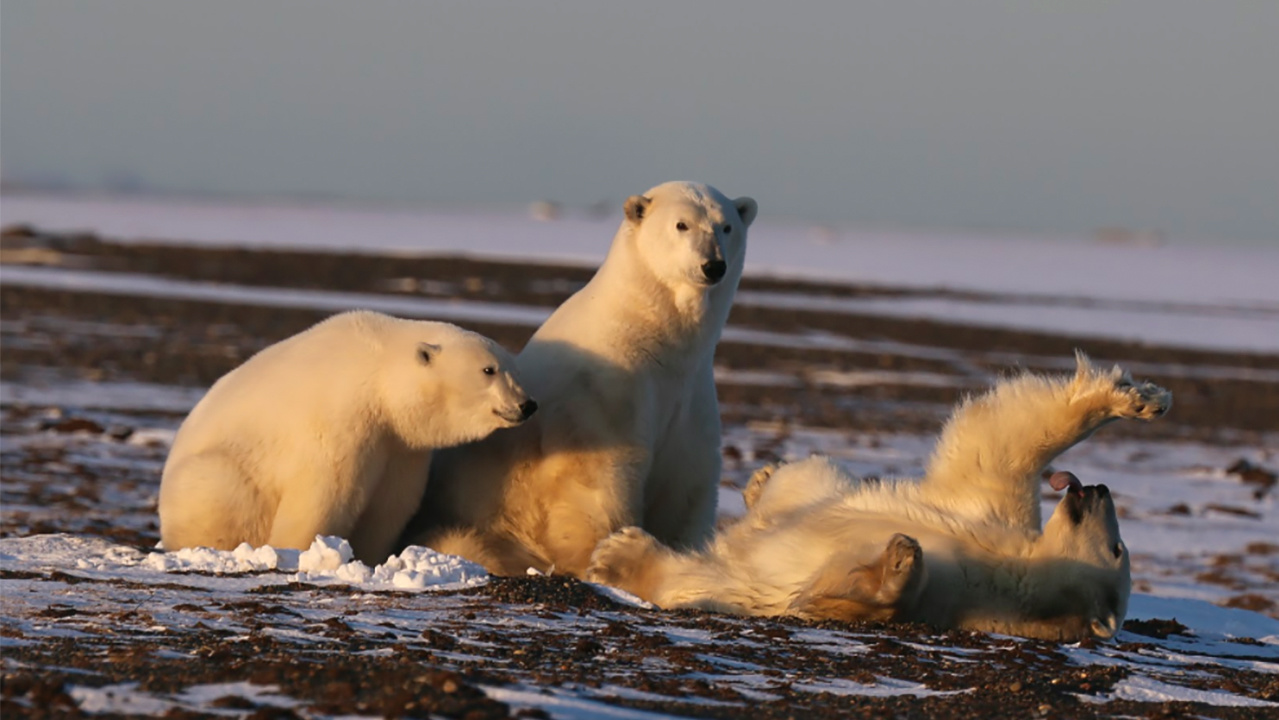
A polar bear with two playful cubs. Jennie Gosché
By Jennie Gosché
In late 2019, before the world was completely upended by the COVID-19 pandemic, I was presented a last-minute chance to photograph polar bears outside one of the northernmost villages in the United States — Kaktovik, Alaska. It was an opportunity I couldn’t refuse, and as the COVID-19 pandemic now stretches into summer 2020, I’m grateful I accepted.
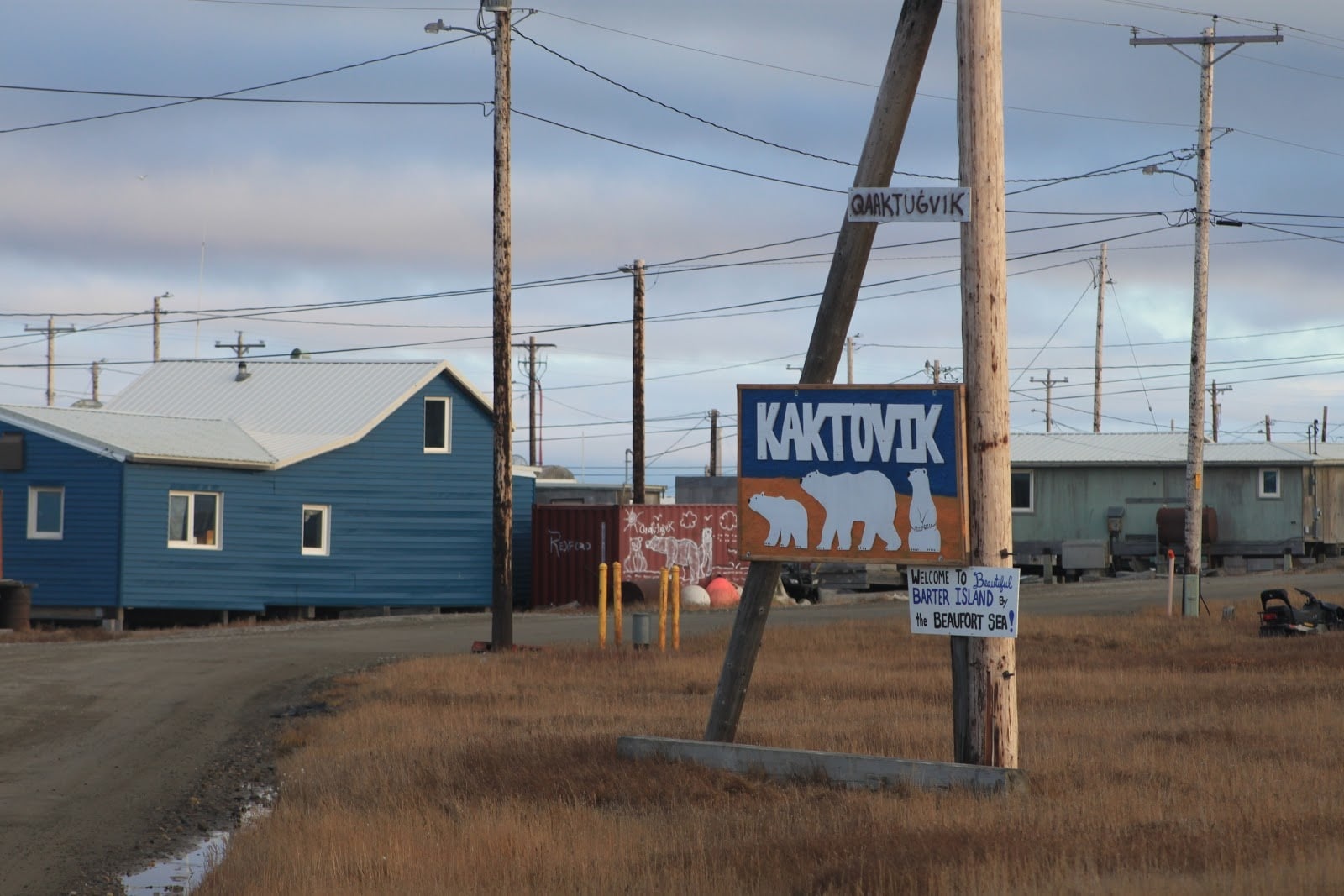
Polar bears adorn the sign leading into Kaktovik. Jennie Gosché
Kaktovik is an Inupiat native village of around 250 people on the coast of the Arctic Ocean, located on barrier islands at the edge of the Arctic National Wildlife Refuge. My first trip there took place in September 2016, and I traveled with the purpose to photograph the threatened Southern Beaufort Sea polar bear population. The coastal region of the Arctic Refuge in fall is a special place to photograph these magnificent animals, as they congregate on dirt and sand spits of land waiting for the winter ice of the Beaufort Sea to make its way to the Alaska shore.
During the late summer and early fall, Inupiat boat owners from Kaktovik guide “tourist” photographers out to view polar bears from a safe distance in the placid lagoon adjacent to the raging waves of the Beaufort Sea. I joined one such group of photographers led by Hugh Rose, a professional photographer and geologist who lives in Fairbanks, and we took a short charter flight from Deadhorse to Kaktovik, landing in a morning snowstorm. But by afternoon, the sun was out and we had three and a half days of sunshine that combined with the ice and snow to create great conditions in which to photograph polar bears.
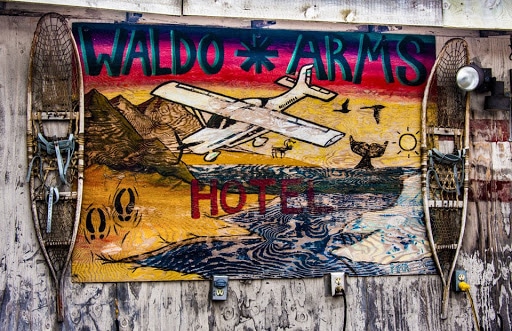
The welcome sign at the Waldo Arms Hotel. Jeff Stamer / www.firefallphotography.com
We were out in the lagoon twice a day, breaking only for lunch at our hotel, the modest but welcoming Waldo Arms Hotel owned by Walt “Waldo” Audi and Merlyn Trainer — one of only two options for places to stay in Kaktovik when visiting. The boat guides are skilled, and they have to be, because knowledge and awareness of depths in the lagoon is critical to prevent a boat from getting stuck in shallow water.
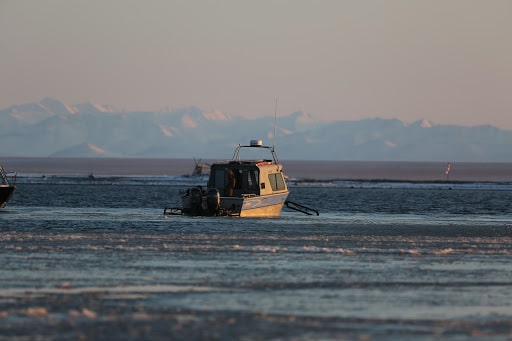
Polar bear viewing is done by boat for the safety of both people and polar bears. Jennie Gosché
This trip we were in a boat with a heated cabin, a perk since we were there later in the season. Our boat driver, however, told us that at that very same time the previous year, the lagoon was completely frozen over. He shared this as we floated on the lagoon in open water, though ice was visible in places and we occasionally heard pieces rubbing against the hull of the metal boat.
____________________________________________________________________________________________________________
With rapidly rising temperatures, increases in wildfires, thawing permafrost, receding glaciers, eroding coastlines and disappearing sea ice, Alaska and the Arctic are on the front lines of climate change. It has hit Alaska’s rural communities and Alaska Native villages especially hard, including villages like Kaktovik. Warming waters and the disappearing Arctic ice cap are also impacting ocean life, from plankton to polar bears to whales. And the decline in sea ice is making it increasingly unsafe for humans and wildlife to travel across it to hunt marine mammals like seals, walrus and bowhead whales.
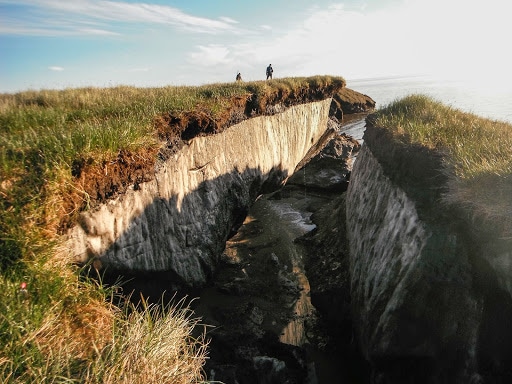
Coastal erosion is causing permafrost to thaw and break off, here along the Arctic coastal plain in the Teshekpuk Lake Special Area of the National Petroleum Reserve – Alaska. Brandt Meixell, U.S.Geological Survey
The Inupiat are primarily subsistence hunters and whalers, harvesting whales each summer (in addition to caribou and other wildlife), the meat from which is shared by the entire village. It is a staple of their diet and has been for thousands of years, but as temperatures warm, the lack of ice combined with changes in whale migration patterns and timing could make hunting progressively more difficult.
The Inupiat share their whale meat with the polar bears, something they have done for many years. This gesture provides much needed food for polar bears, especially as they spend longer periods of time on land due to the receding sea ice. When I visited Kaktovik in 2016, my most memorable photo is of a cub on top of whale bones, shaking what looks like animal skin in its mouth.
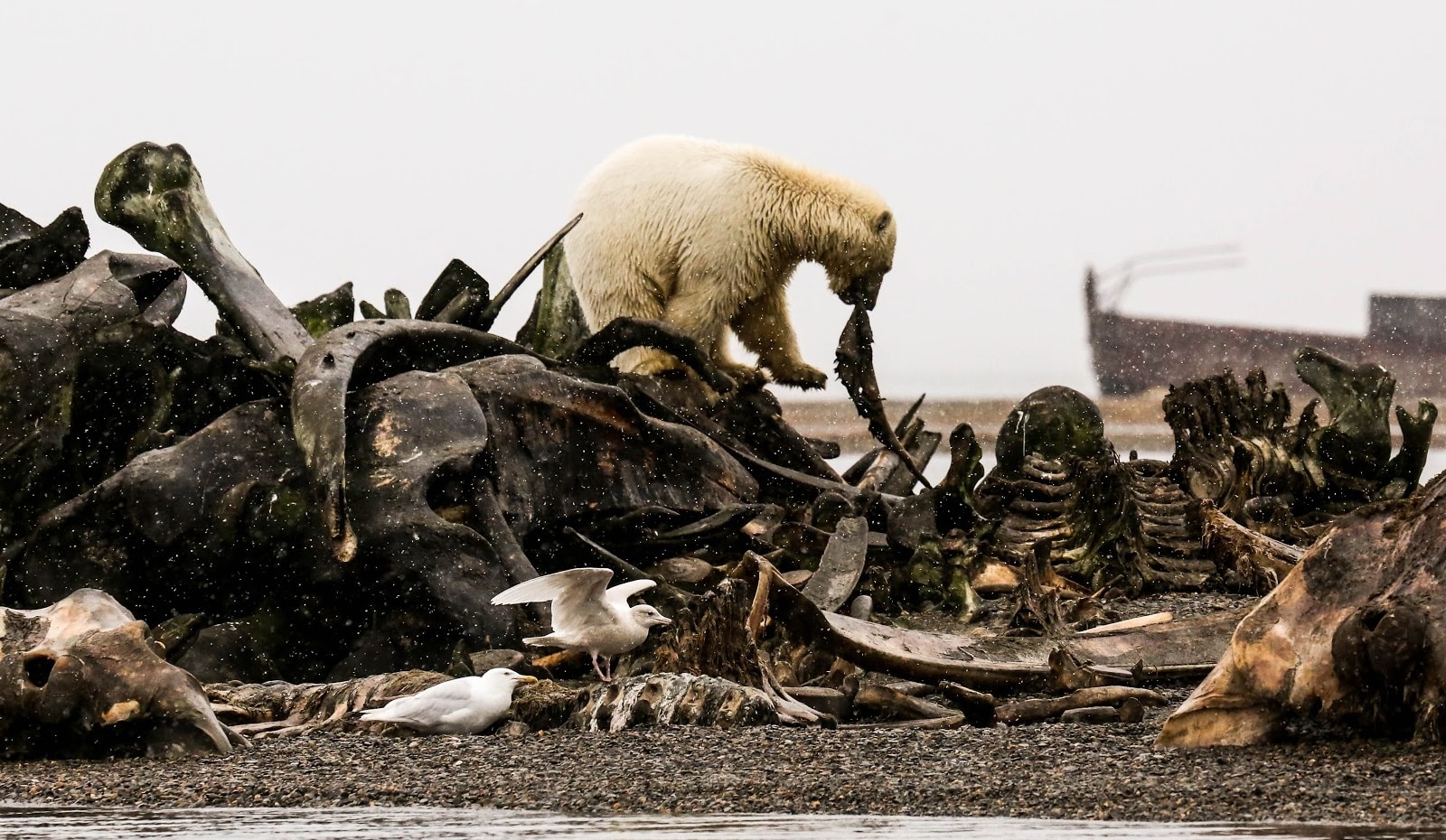
Bears have learned to scavenge whale carcasses left over from successful whaling hunts. Jennie Gosché
As I returned to the village in late 2019, however, they had moved the bone pile away from the lagoon to an area off-limits to tourists. I was told the bone pile now only stays on land for a short time, and then the bones are pushed into the ocean. Eventually, this change could affect the overall health of the Southern Beaufort Sea polar bears, as many of them increasingly den on land in the Arctic National Wildlife Refuge and utilize the shared whale meat for sustenance during the summer and early fall before they enter their maternal birthing dens in November.
____________________________________________________________________________________________________________
Which brings me back to the Arctic National Wildlife Refuge, as wild a place as any other on Earth but one also under threat of oil and gas development. While in Kaktovik I learned that there is not a consensus in the village on the question of allowing oil drilling in the Arctic Refuge. Climate change and impacts to wildlife are serious concerns, so much so that more than 60 village residents signed a petition in 2017 opposing drilling on the Arctic Refuge coastal plain.
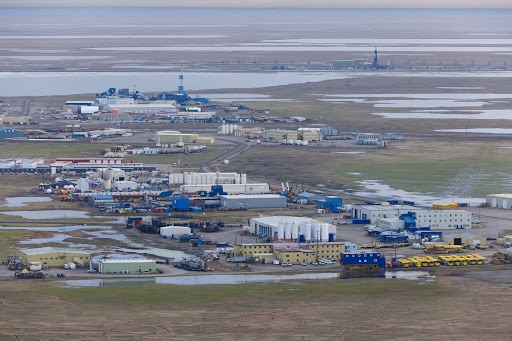
Oil production facilities dominate the region around Prudhoe Bay, to the West of the Arctic Refuge. Florian Schulz / www.florianschulz.org
Helping to prevent development in the Arctic National Wildlife Refuge — a place that supports the greatest variety of plant and animal life in the entire circumpolar north — is very important to me, not least of all because the U.S. government has admitted it simply doesn’t have enough information about the impacts of oil and gas development on the coastal plain to protect its wildlife and other values. Oil drilling will compound the devastating climate impacts already being felt by villages in the region, increasing carbon emissions, worsening climate pollution and further harming front line communities.
Especially now, in the midst of an uncertain present and looking forward to an uncertain future, we need to press pause on Arctic Refuge development. Instead of recklessly rushing ahead, more research over extended periods of time is needed so that we can fully understand the potential impact oil drilling will have on local villages, our climate and wildlife like the majestic polar bear.

A mother nurses her cubs. Jennie Gosché
Jennie Gosché has traveled to the Arctic seven times to photograph polar bears. Having visited the five countries where polar bears are found (Denmark (Greenland), Norway, Russia, the United States and Canada), Kaktovik, Alaska, has become her favorite place to photograph them. Jennie’s photography has been exhibited in Washington, D.C., Minneapolis and Maryland. She is a member of Alaska Wilderness League.

 233k
233k  41k
41k  Subscribe
Subscribe 